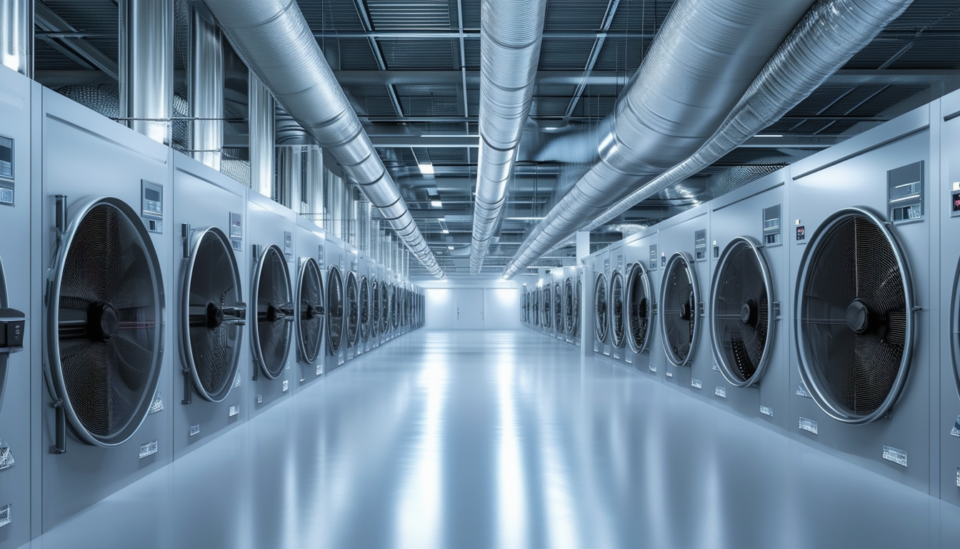Understanding Ventilation Challenges in Laundry Services
The laundry services industry faces lots of ventilation challenges due to the diverse areas within the facilities. Each section, from dryer sections and washing machines to folding stations, presents unique air quality issues such as high humidity, fluctuating temperatures, chemical evaporation, and lint build-up. Effective ventilation systems are crucial to controlling lint to prevent fires, manage moisture to avoid mould and corrosion and mitigate the intense heat from machinery. Additionally, ensuring safety from flammable chemicals with explosion-proof equipment is paramount.
After conducting a comprehensive customer analysis, prevalent ventilation concerns and requirements in the laundry services sector have been identified. Addressing these issues not only enhances worker comfort and safety but also extends equipment lifespan and boosts overall operational efficiency.
Managing Excessive Humidity and Heat in Laundry Facilities
Excessive humidity and overheating are common issues in professional laundry services due to the high moisture content from washing processes and the intense heat generated by dryers and other machinery. Continuous operation of washing machines introduces large amounts of water into the environment, leading to moisture accumulation, mould growth, and equipment corrosion if not properly ventilated. Concurrently, dryers and other heat-producing equipment generate substantial heat, contributing to an uncomfortable work environment and potentially affecting equipment performance.
Effective ventilation systems, such as air circulators, mancoolers, giant fans, roof fans, and wall exhaust fans, are essential for managing these conditions. These systems ensure proper airflow and cooling, maintaining a safe, comfortable, and efficient workspace. Addressing these challenges not only improves worker comfort but also extends equipment lifespan and enhances overall operational efficiency.

Addressing the Accumulation of Dust and Lint
In industrial laundry facilities, the accumulation of lint and dust presents a serious fire hazard. The constant operation of washing and drying machines generates substantial lint and dust, which can build up in ducts, vents, and other areas if not regularly cleaned. This accumulation increases the risk of fires, threatening worker safety and equipment integrity.
To mitigate these risks, it is crucial to implement regular maintenance schedules and invest in effective ventilation solutions. Equipment such as wall exhaust fans, roof fans, axial fans, centrifugal fans, negative air units, giant fans, and mancoolers are designed to manage and remove lint and dust effectively. Proper management of these airborne particles enhances safety, improves operational efficiency, and prolongs the equipment’s lifespan.

Mitigating the Evaporation of Chemicals and Detergents
The evaporation of chemicals, detergents, and cleaning agents in laundry service facilities presents notable challenges. As these substances are used in large quantities, their vapours can accumulate in the air, potentially leading to health hazards for workers and contributing to poor indoor air quality.
Implementing effective ventilation solutions such as roof fans, wall exhaust fans, and axial fans can significantly mitigate these risks. These systems ensure the removal of hazardous vapours, maintaining a safer and healthier work environment. Proper ventilation not only safeguards worker health but also contributes to better indoor air quality and overall operational efficiency.

Effective Ventilation Solutions for the Laundry Industry
Effective ventilation solutions are crucial for addressing the diverse challenges faced by the laundry services industry. By implementing the appropriate ventilation systems, facilities can ensure proper airflow, manage moisture, control temperature, and mitigate hazardous vapours.
Looking for a ventilation solution for your laundry facility?
Discover our complete guide to optimising airflow in laundry operations. Fill out the form for free access.
